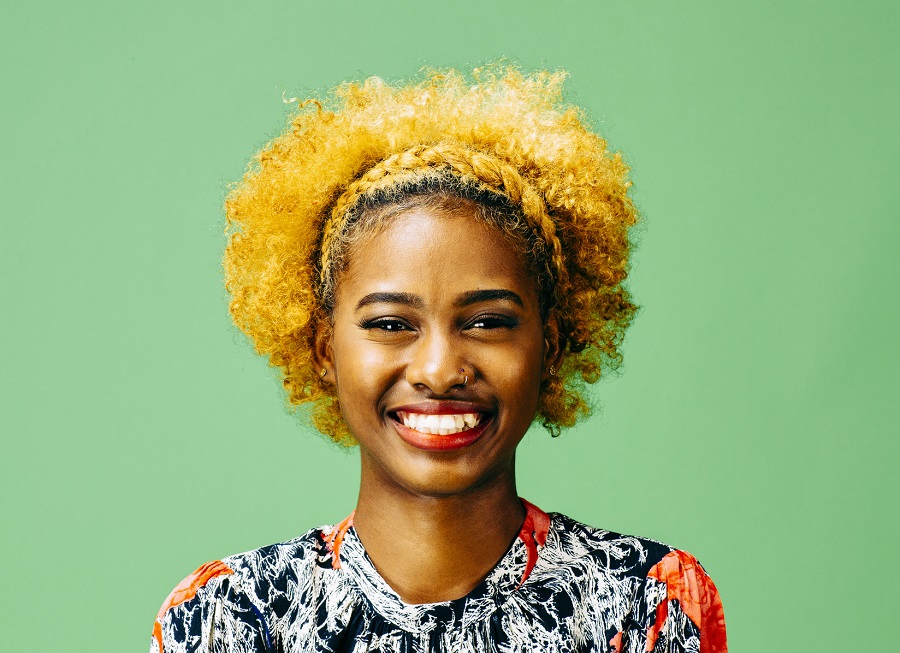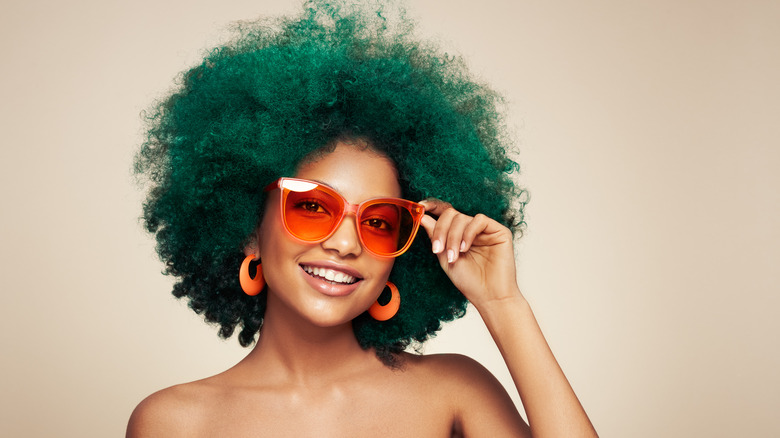Genetics is one of the most important factors. According to studies, people with a family history of the condition are more likely to experience premature greying of their hair. Stress, smoking, a poor diet lacking in essential vitamins and minerals, hormonal imbalances, and medical conditions such as thyroid disorders or autoimmune diseases can all contribute to premature greying of hair.
According to research, greying hair is caused by depleting melanin, a pigment that gives hair colour.
Traditional hair dyes may contain harmful and toxic chemicals. Natural hair dyes may be healthier because they contain ingredients you already have at home.
You can dye your hair in various ways, including going to a salon, using a box at home, or using a temporary colour spray.
If you’re looking for an alternative way to colour your hair, try the natural hair dyes listed below.
How to Color Your Hair at Home Naturally
Genetics and Premature Greying
Have you ever wondered why some people experience premature greying? It turns out genetics play a crucial role. Family history can increase the likelihood of premature greying, but it’s not the only factor. Stress, poor diet, and hormonal imbalances are also contributors. Studies suggest that the root cause lies in the depletion of melanin, the pigment responsible for hair colour.

Understanding Melanin and Hair Color
Melanin isn’t just a scientific term; it’s the secret behind your hair’s hue. As melanin levels decrease, the hair loses its colour, resulting in greying. Traditional hair dyes often mask this process, but they come with a price – exposure to toxic and damaging chemicals.
The Dangers of Traditional Hair Dyes
Traditional hair dyes, while effective, often contain harmful chemicals. Parabens, ammonia, and sulfates are common culprits that can lead to skin irritation and potentially increase the risk of cancer. As awareness grows, the demand for safer alternatives has paved the way for natural hair dyes.
Embracing Natural Alternatives
Enter the world of natural hair dyes, a realm where your kitchen becomes your salon. These alternatives not only offer a spectrum of colors but also promote healthier hair. Let’s dive into some DIY options that might already be in your pantry.
DIY: Carrot Juice Hair Dye
Looking for a reddish-orange tint? Carrot juice might be the answer. Mix it with a carrier oil, apply, wrap, and let it set. Rinse with apple cider vinegar for a natural glow that lasts for weeks.
Beet Juice for a Deeper Red Tint
For a deeper red with cooler undertones, turn to beet juice. The process is similar – mix with a carrier oil, apply, wrap, and let it work its magic. This DIY option offers a richer hue that’s sure to turn heads.
Vibrant Red with Henna
Henna, a plant-based dye, is a timeless option for achieving vibrant red hues. Mix, apply, wrap, and let it sit for hours. The results? Long-lasting color that can withstand the test of time.
Lighten Naturally with Lemon Juice
Seeking sun-kissed highlights? Lemon juice is your ally. Spray it liberally, bask in the sun, and let the magic happen. Unlike other methods, the results are permanent, so be ready for a gradual, natural lightening effect.
Coffee – Not Just for Caffeine Boosts
Coffee enthusiasts, rejoice! Brew a strong cup, mix it with grounds and conditioner, apply, and let it set. While the change may be subtle, it’s a quick and affordable way to darken your hair.
Sage: A Natural Darkening Agent
Dark brown or black hair need a boost? Sage is your companion. Steep, cool, and pour over your hair for a tint that deepens shades and covers greys.
Chamomile Tea for a Subtle Lightening Effect
Blondes, listen up! Chamomile tea is your go-to for a gentle lightening effect. Steep, cool, and pour through your damp hair for a bright, beautiful colour that’s easy to maintain.
Prolonging the Life of Your Natural Hair Color
You’ve achieved the perfect colour; now, let’s make it last. Limit heat styling, use thermal protectants, opt for cooler showers, and consider a water filter to preserve your natural hue.
Understanding the Risks of Regular Hair Dyes
Traditional hair dyes, though effective, pose potential risks. Chemicals like those found in semi-permanent and permanent oxidative dyes may increase cancer risk. Opting for natural alternatives not only protects your health but also enhances the well-being of your hair.
Conclusion
In a world saturated with artificial hues, the beauty of natural hair colours stands out. Embrace the change, experiment with these natural dyes, and revel in the healthier, vibrant hair you’ve always wanted.
FAQs About Natural Hair Dyes
Are natural hair dyes as effective as traditional ones?
Natural hair dyes can be as effective, offering vibrant colours without the harmful chemicals found in traditional dyes.
How long do the colours from natural hair dyes last?
The longevity varies, but with proper care, natural dyes can last from a few weeks to several weeks, depending on the method used.
Can I mix different natural dyes for a custom colour?
Experimenting with combinations is possible, but the results may vary. It’s advisable to test a small section before applying to the entire hair.
Are there any allergic reactions associated with natural hair dyes?
While rare, some individuals may be allergic to natural ingredients. Always perform a patch test before applying any natural hair dye.
Can I use natural hair dyes on chemically treated hair?
It’s generally safe, but it’s wise to consult with a hairstylist or conduct a strand test to ensure compatibility with previously treated hair.
Unveil your hair’s natural beauty while avoiding harmful chemicals – it’s not just a trend; it’s a healthier way to express yourself.
